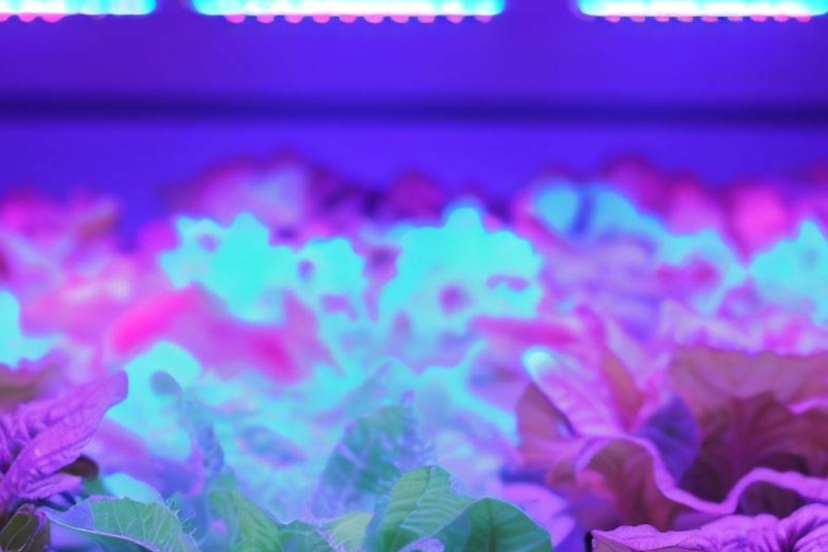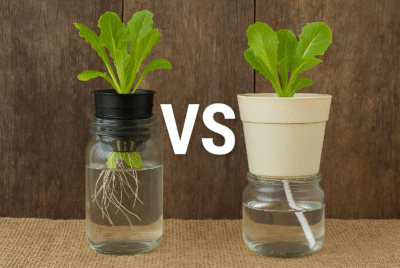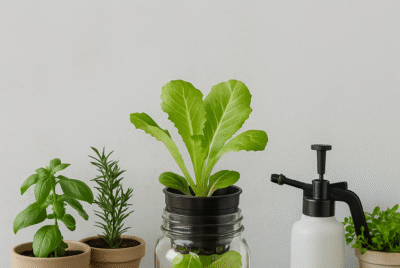Hydroponic Grow Lights : Illuminate Success
Hydroponic gardening has revolutionized the way we grow plants, offering efficient and sustainable cultivation methods including the use of Hydroponic Grow Lights. In this article, I will guide you through the world of hydroponic grow lights, helping you make informed decisions and achieve optimal plant growth.
Understanding Hydroponic Grow Lights
Hydroponic grow lights come in various types, each with its own set of benefits and considerations. The three most common types are High-Intensity Discharge (HID) lights, Light-Emitting Diode (LED) lights, and fluorescent lights. HID lights, including metal halide and high-pressure sodium, have been widely used in the past. However, LED lights have gained popularity due to their energy efficiency and customizable light spectra. Fluorescent lights, such as T5 and T8 tubes, are commonly used for seedlings and small-scale setups.
When choosing grow lights for your hydroponic system, several factors should be taken into account. Light spectrum, intensity, and energy efficiency are key considerations. Different plants have varying light requirements, and understanding their specific needs is crucial for successful growth. Additionally, considering energy efficiency can help minimize operational costs and reduce environmental impact.
Choosing the Right Grow Lights for Your Hydroponic Setup
Assessing your plant’s light requirements is the first step in choosing the right grow lights. Some plants, like leafy greens (lettuce), thrive under blue spectrum light, while others, such as fruiting plants, require a blend of red and blue light. Determining the appropriate light intensity is also crucial, as too little or too much light can affect plant growth and development. Calculating the light intensity based on the size and type of your hydroponic system ensures optimal conditions for your hydroponic plants.
In addition to light spectrum and intensity, energy efficiency and cost-effectiveness are important factors to consider. LED grow lights have become increasingly popular due to their energy-saving capabilities and long lifespan. While they may have a higher upfront cost, they can save you money in the long run by reducing energy consumption and the need for frequent bulb replacements.
Installation and Placement of Grow Lights
Proper installation and placement of grow lights are crucial for achieving uniform light distribution and maximizing plant growth. Positioning the lights at the correct height ensures that plants receive adequate light without causing light burn or shading. As your plants grow, it’s important to adjust the height of the lights to maintain the optimal distance.
Maintaining and Caring for Grow Lights
Regular maintenance is essential to keep your grow lights in optimal condition. Cleaning the lights periodically removes dust and debris that can obstruct light output. Inspecting the bulbs and components helps identify any issues or signs of wear and tear. If necessary, replace the bulbs or components promptly to ensure uninterrupted light supply.
Monitoring and adjusting light schedules is also important, as different plants have varying light requirements during different growth stages. Providing the right amount of light during the vegetative and flowering phases promotes healthy plant development and higher yields.
Enhancing Light Efficiency and Effectiveness
To maximize light efficiency and effectiveness, consider using reflectors, light movers, and other accessories. Reflectors help redirect light towards the plants, reducing wasted light and improving overall efficiency. Light movers can be used to simulate the movement of the sun, providing more even light distribution throughout the day.
In some cases, supplemental lighting techniques may be beneficial. For example, using side lighting or strip lights can ensure that all parts of the plant receive sufficient light, especially for tall or bushy plants. Experimenting with different lighting techniques can help optimize plant growth and productivity.
Troubleshooting Common Grow Light Issues
Despite careful planning and maintenance, you may encounter common issues with grow lights. Light deficiency, characterized by elongated stems and pale foliage, can be resolved by increasing light intensity or adjusting the light schedule. Excess heat can be mitigated by proper ventilation and the use of cooling systems. Poor light distribution can be improved by repositioning the lights or using reflectors.
If you experience any difficulties with your grow lights, it’s important to diagnose the problem early and take appropriate measures to address it. Timely troubleshooting can prevent further damage to your plants and ensure optimal growth conditions.
Conclusion
Choosing the right hydroponic grow lights and optimizing their usage is crucial for successful high yielding hydroponic gardening. By understanding the different types of grow lights, considering plant requirements, and implementing proper installation and maintenance practices, you can create an ideal environment for your hydroponic plants to thrive. Remember to assess your specific needs, stay informed about the latest lighting technologies, and adapt your lighting setup as your plants grow and evolve.
FAQs
1. Can I use regular household light bulbs for my hydroponic system?
Regular household light bulbs are not suitable for hydroponic systems. They do not provide the specific light spectrum and intensity required for optimal plant growth. It’s recommended to use dedicated grow lights designed for hydroponics.
2. How many hours a day should I keep the grow lights on?
The recommended light cycle for most hydroponic plants is around 14 to 16 hours of light per day during the vegetative stage and 10 to 12 hours during the flowering stage. However, specific light requirements may vary depending on the plant species and growth stage, so it’s essential to research the needs of your specific plants.
3. Are LED grow lights better than HID lights for hydroponics?
LED grow lights offer several advantages over HID lights. They are more energy efficient, have a longer lifespan, and provide customizable light spectra. LED lights also generate less heat, reducing the risk of heat damage to your plants. Additionally, they are compact and lightweight, making them easier to install and adjust. While HID lights have been traditionally used in hydroponics, LED grow lights have become the preferred choice for many growers due to their numerous benefits.
4. Can I mix different types of grow lights in my setup?
Yes, it is possible to mix different types of grow lights in your hydroponic setup. This approach can help you achieve a broader light spectrum and cover different lighting needs of various plant species. For example, you can combine LED lights with fluorescent lights to provide a balanced spectrum for optimal plant growth. However, it’s important to ensure proper positioning and adjust the light intensity to maintain uniform light distribution.
5. What is the average lifespan of grow light bulbs?
The average lifespan of grow light bulbs depends on the type and quality of the bulbs. LED grow lights generally have a longer lifespan, ranging from 50,000 to 100,000 hours of continuous use. HID lights, such as metal halide and high-pressure sodium, typically last around 10,000 to 20,000 hours. Fluorescent lights have a lifespan of approximately 10,000 to 20,000 hours as well. It’s important to monitor the performance of your bulbs and replace them when they start to show signs of diminished light output.
In conclusion, choosing the right hydroponic grow lights and optimizing their usage is crucial for successful indoor gardening. By understanding the different types of grow lights, considering plant requirements, and implementing proper installation and maintenance practices, you can create an ideal lighting environment for your hydroponic plants. Remember to research your specific plant’s needs, stay up to date with advancements in grow light technology, and adapt your lighting setup as needed. With the right grow lights, you can achieve healthy plant growth and abundant harvests in your hydroponic garden.
*We may earn a commission from purchases made through our links, at no cost to you. This does not affect our product recommendations. Please see our disclosure to learn more.




